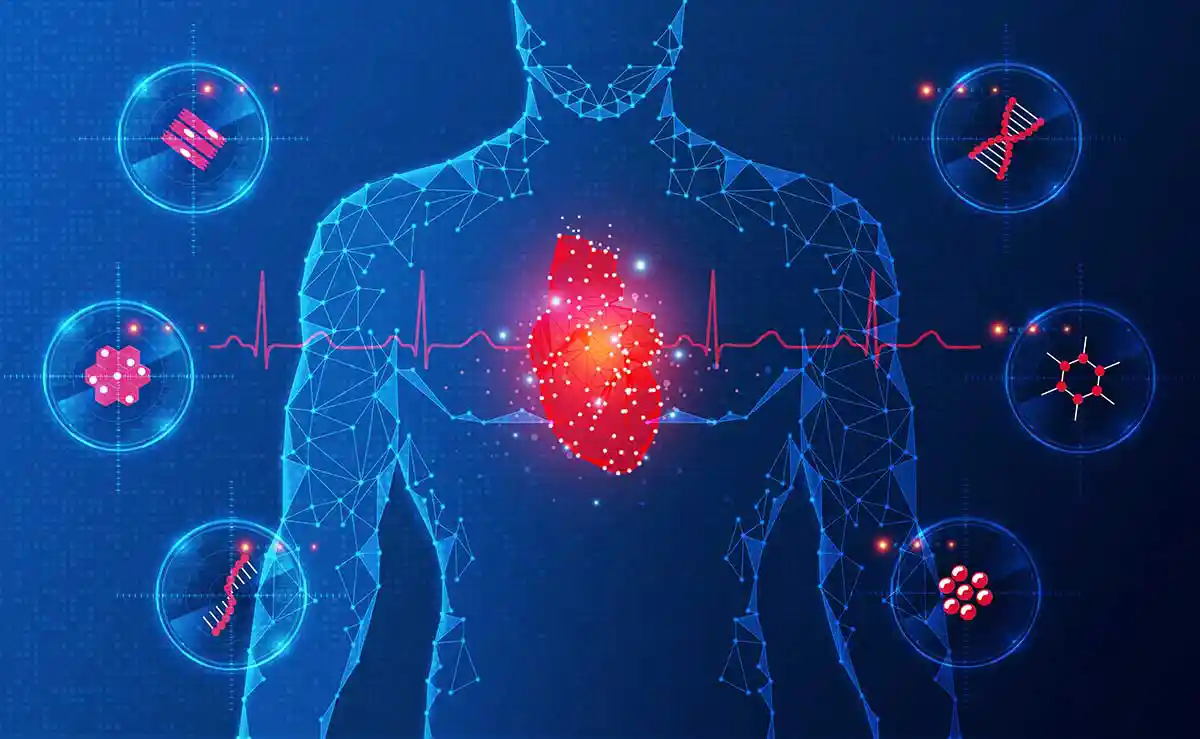
Feb 14, 2023
Blog Life Sciences Cardiac biomarkers and their growing significance
The incidence of cardiovascular disease (CVD) is rising. CVD is the leading cause of death globally, taking an estimated 17.9 million lives per year and accounting for 32% of all global deaths. It’s a concerning statistic and one that cannot be ignored, which is driving significant growth and innovation in the development of cardiac biomarkers.
Biomarkers are a crucial part of the medical industry; Not only are they used to diagnose patients with various conditions, but they also help with staging the extent of a disease, or predicting and monitoring a patient’s response to treatment. Cardiac biomarkers in particular are incredibly useful for determining suspected acute coronary syndrome (ACS) and cardiac ischemia, making them an invaluable part of the healthcare landscape.
The critical nature of biological indicators is propelling the market to new heights. BCC Research expects the market for cardiac biomarkers to increase by as much as $10.4 billion by the end of 2027, to reach heights of $23.8 billion.
Types of biomarkers and how they are used
Biomarkers can indicate a variety of health or disease characteristics, including the level or type of exposure to an environmental factor, genetic susceptibility, genetic responses to exposure, markers of subclinical or clinical disease, or indicators of response to therapy. A simple way to think about biomarkers is as indicators of a disease trait (risk factor or risk marker), disease state (preclinical or clinical) or disease rate (progression).
The five key types of biomarkers include:
Each one is used for a different purpose. While antecedent biomarkers tests identify the risk of developing an illness, screening biomarkers are used to screen for subclinical diseases like cancer. As the name suggests, diagnostic biomarkers are used to diagnose a variety of illnesses, including cancer, stroke, and heart failure. Staging biomarkers tell doctors the stage and severity of a disease, while prognostic biomarkers predict the diseases a patient might have in the future and determine whether a patient may or may not respond to a particular treatment.
The gold standard of cardiac biomarkers
The gold standard of cardiac biomarkers has evolved in the past few decades. What was once the gold standard has now faded in significance, with CK-MB previously being the most widely used and prescribed biomarker. Some reports are now showing CK-MB to have high sensitivity in patients with skeletal injury but no cardiac condition, which has called its accuracy into question.
Cardiac Troponins (cTns) have emerged as the preferred cardiac biomarker, offering the most sensitive and specific test for myocardial damage. Because it has increased specificity compared with CK-MB, troponin is a superior marker for myocardial injury. Other common cardiac biomarkers include hs-cTn, which has highly sensitive testing for AMI peaking at around three hours, myoglobin, and CRP.
Emerging cardiac biomarkers
As the incidence of CVD increases, so does the need for newer and more rapid techniques to monitor the disease. CK-MB has demonstrated that current techniques are often insufficient, with frequent inaccuracies and inconsistencies cropping up. This is prompting continuous R&D to discover new cardiac biomarkers, with some findings representing promising new avenues of development.
Below, we’re diving into some of the most prominent emerging cardiac biomarkers.
1. Choline
Choline is emerging as a potential biomarker for detecting coronary plaque instability and myocardial ischemia in patients with ACS. This offers huge value to existing clinical tools, as choline could be used before cTn is elevated. Biomarkers of ischemia and numerous others related to inflammation, coronary plaque instability, rupture, thrombosis and ventricular function are being investigated, but the emergence of high-sensitivity troponin will unlock new clinical applications for novel cardiac biomarkers.
2. Ischemia-Modified Albumin (IMA)
IMA is a unique biomarker of ischemia that is produced when circulating serum albumin contacts ischemic heart tissues. IMAs are quantifiable by the ACB assay, which is based on IMA’s inability to bind to cobalt. Recently, the FDA approved a test that is the first of its kind and was developed for the diagnosis of myocardial ischemia with a 30-minute laboratory turnaround time.
3. Myeloperoxidase
Myeloperoxidase (MPO) is a leukocyte-produced enzyme that manufactures reactant oxidant species. It has been connected to prothrombotic oxidized lipid production, plaque instability and vasoconstriction from nitrous oxide depletion. Initial studies found significantly elevated MPO concentration in patients with angiographically documented CAD. These findings fueled additional investigation of MPO as a potential cardiac marker.
4. S100-beta
S100-beta (S100B) is a low molecular weight glial protein (roughly10 kDa) that belongs to a multigenic family of calcium-mediated proteins (S100 proteins). They are named for their solubility in 100% ammonium sulfate. The S100 protein family consists of a number of subunit combinations, which diverge into the hetero- and homodimer forms of α-α, α-β and β-β subunits. S100B has high affinity to nerve tissue and is heavily accumulated in the cerebral astroglial compartment and peripheral Schwann cells and extraneuronally in melanocytes.
Access an in-depth review of cardiac biomarker technologies and markets
Innovations and developments are altering the face of healthcare, and biomarkers are not exempt. BCC Research’s latest report dives into the evolving and growing world of cardiac biomarkers, helping those with investments in the industry gain a clearer understanding. It’s a market with huge potential and growth on the horizon, and having access to trusted research has never been of greater value.
Download your complimentary report overview or purchase the report in full here.
Alternatively, consider becoming a member of the BCC Research library and gain access to the entire catalogue of reports within our Biotechnology category. Enquire below for more details.

Olivia Lowden is a Junior Copywriter at BCC Research, writing content on everything from sustainability to fintech. Before beginning at BCC Research, she received a First-Class Master’s Degree in Creative Writing from the University of East Anglia.
In today’s fast-paced biomedical world, researchers and pharmaceutical companies...

Radiopharmaceuticals represent a cutting-edge frontier in modern medicine, offer...

Implantable Remote Patient Monitoring (IRPM) devices are revolutionizing healthc...

We are your trusted research partner, providing actionable insights and custom consulting across life sciences, advanced materials, and technology. Allow BCC Research to nurture your smartest business decisions today, tomorrow, and beyond.
Contact UsBCC Research provides objective, unbiased measurement and assessment of market opportunities with detailed market research reports. Our experienced industry analysts assess growth opportunities, market sizing, technologies, applications, supply chains and companies with the singular goal of helping you make informed business decisions, free of noise and hype.